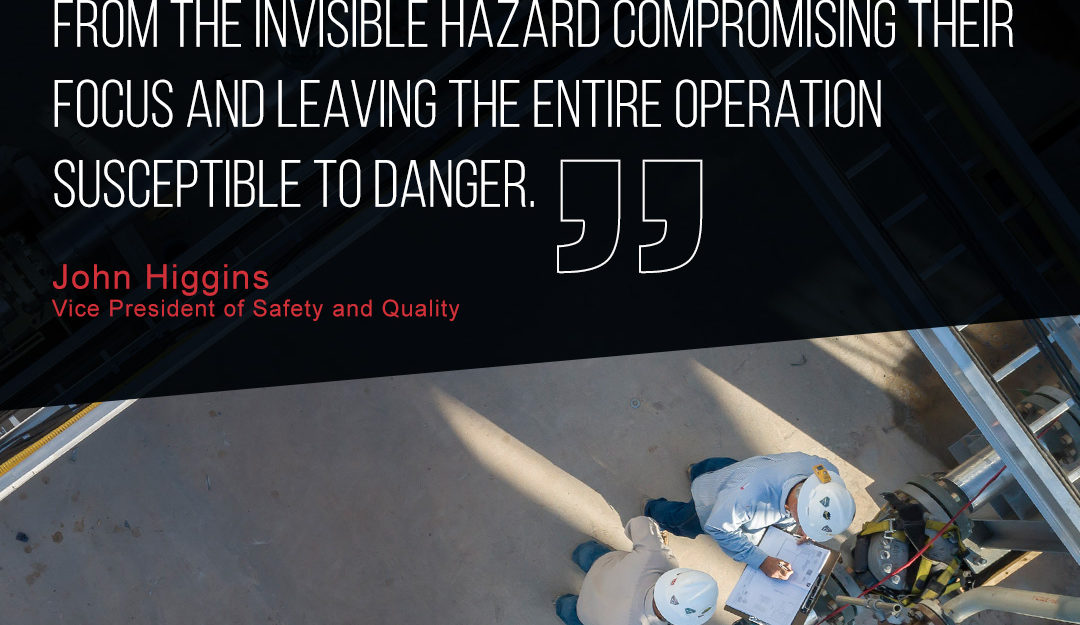Putting our distractions in focus

We all hoped the second half of 2020 would bring some return to normalcy and stability. We hoped there would be some truth to the idea that warmer weather and months of self-isolation would stop the spread of COVID-19. “Flatten the curve” became our battle cry as we watched the number of cases rise, fall, and rise again. Unfortunately, it doesn’t seem there’s an end in sight. We must adopt a new normal beginning first with a review of all our safety protocols. We must then identify and repair any weakness or flaw in these protocols without ever losing focus on our latest adversary.
As Vice President of Safety and Quality, I try to remain up-to-date on all the newest advancements in safety practices. I understand that caring for and protecting our workers in the field is an ongoing endeavor without a finish line. Since the emergence of the virus, I have doubled my studies. My team and I have worked tirelessly to ensure our employees are well informed and safeguarded against infection while successfully maintaining Saulsbury’s standard of operational safety. I am incredibly proud of my team’s performance and am more confident in our abilities than ever before.
Since Dick Saulsbury founded the future Saulsbury Industries in 1967, workplace safety and health has vastly evolved. In December 1970, President Nixon signed the Occupational Safety and Health Act to “assure safe and healthful working conditions for working men and women.”1 Since the inception of OSHA, we have witnessed constant and continued growth in workplace safety, with many programs designed with the intent of sending employees home safely each day. Efforts from fall prevention and protection to behavior-based safety measures have transformed the workplace and the livelihoods of workers. However, despite these and other advancements, we find ourselves revisiting an old familiar risk. One that springs from the shadows when its least expected to wreak havoc on all those who ignore it. Our most formidable foe in the battle for our health and safety is distractions.
We face distractions every day. They occur without thought, and too often, we do not realize we’re distracted until it is too late. Consider, for instance, the last time you drove your vehicle. Were you focused entirely on the road? Did you continuously scan your rearview mirror and side-view mirrors? Were you paying attention to the actions of the other drivers?
We are well aware of the dangers that can ensue when drivers are distracted by their cell phones, but did you know that hands-free cell phone use can slow your braking reaction time by 18 percent?2 Chances are, in addition to driving, you adjusted the radio. You were probably thinking about your destination and what you would do after you arrived. Perhaps you were talking to your passengers. These kinds of behaviors can result in cognitive distractions that can be equally as dangerous as texting and driving. Our brains simply cannot handle the workload at a pace necessary for safe driving.
Most people identify themselves as multitaskers when, in fact, studies have shown that the human brain is incapable of doing two things at once. Attempting to juggle two complex tasks at once will likely result in the loss of information, longer reaction times, and an exhaustion of our brain’s capacity.
The same theory on multitasking is valid for the workplace, particularly in the industrial construction industry. Because many activities include heavy equipment, power tools, stored energy, fall hazards, and more, a distracted individual poses a severe risk to his or her self and those nearby.
Today, our workforce is facing more distractions than ever. In addition to the technology occupying most of our mental bandwidth, the global pandemic resulted in an overabundance of uncertainty, questions, and fear. The already fluctuating oil and gas market dropped to new lows, businesses and schools shut down, and necessities like toilet paper and disinfectants became scarce. Many lost their jobs. We lost and gained family members without the freedom to mourn and celebrate in person. There is fear for our health and the health of our loved ones, civil unrest, the concern that those around us may be infected, and the unknowable future.
Summer’s extreme temperatures and reports of murder hornets reaching U.S. soil certainly don’t help.
How do we prevent these distractions from placing employees in danger? We must have frequent and candid conversations. Take the time to educate your workforce on how the mind works and the importance of staying focused on one task at a time. Remind each worker of their responsibilities and ask that they keep an eye out for their coworkers. Provide resources and make yourself available to answer questions. We must do a better job of planning and communicating our work activities, especially with simultaneous operations. Understand that merely relaying instructions is not adequate. You must find creative ways to engage workers.
By only supplying training, tools, and protective gear needed for a safe work site, you’ve only begun the work. As we enter the age of this new normal, you must also safeguard your employees from the invisible hazard compromising their focus and leaving the entire operation susceptible to danger.
1 United States Department of Labor, Occupational Safety and Health Act of 1970.
2 National Safety Council, Understanding the Distracted Brain.